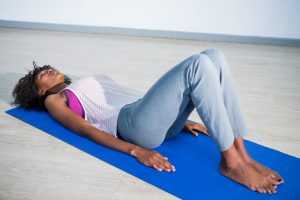 Did you know that a healthy start to your singing practice regimen doesn’t necessarily have to begin with any actual singing? During your initial singing lessons, chances are that your voice teacher brought up the topic of breath support or breathing technique when discussing the pathway to healthy, sustainable singing. One of the easiest ways to improve stamina and vocal comfort while singing is to incorporate breathing exercises for singing into your vocal warmups.
Did you know that a healthy start to your singing practice regimen doesn’t necessarily have to begin with any actual singing? During your initial singing lessons, chances are that your voice teacher brought up the topic of breath support or breathing technique when discussing the pathway to healthy, sustainable singing. One of the easiest ways to improve stamina and vocal comfort while singing is to incorporate breathing exercises for singing into your vocal warmups.
Below, I’ve outlined the who, what, when, where, why, and how of breathing exercises for singing. This information will not only offer a how-to guide for singers new to breath exercises but also provide some practical additions to any experienced singer’s warmup regimen. At the end of this article, I’ve described four breathing exercises for singing that I’ve found to be both accessible and useful; my goal is that at least one of these exercises fulfills the needs of every singer who tries them.
Who
All singers! Singers of any level of proficiency will benefit from performing breathing exercises for singing.
What

Breathing exercises seem more technical than they actually are—these exercises are simply varied ways to control your inhales and exhales to warm up the lungs. Warming up the lungs before singing allows the body to successfully to support the voice with full, deep breaths. The act of singing can use as much as 90% of the singer’s lung capacity, making the activity much more physically demanding than new singers often realize. In fact, breathing exercises could be swapped out for physical exercise, such as running or yoga, and will often achieve the same benefits for singing.
When
Typically, the singer will want to complete a breath exercise or two before warming up the voice so that the feeling of healthy, full, and efficient breathing established from the breathing exercises will carry into the vocal warmups and support the singing throughout the remainder of the practice session, lesson, or performance.
Where

Breathing exercises are always appropriate to use where any singing will take place, whether it be before a voice lesson, before a performance, or before personal practice time. In fact, breathing exercises can be useful during many non-musical occasions as well. For example, I always complete a breath exercise during occasions that make me feel nervous or anxious, such as public speaking occasions or lectures. I’ve also found certain breathing exercises to be useful at night when trying to fall asleep, particularly when I can’t seem to calm my mind after a hectic day. These exercises, in addition to supporting healthy vocal technique, work well for achieving a calm, focused, and even meditative state of mind.
Why
Good breath support is not only ideal for producing your best possible singing; it’s essential for maintaining healthy technique and keeping the voice safe from injury. A voice unsupported by enough breath relies on other means to produce sound, such as muscular tension or “gripping” in the muscles near the vocal chords. Long-term tension and strain could eventually lead to permanent vocal damage.
How
Hopefully by now, I’ve convinced you to give breathing exercises for singing a try. The four exercises below range in accessibility from least complex to most complex (although none of these exercises require any kind of training). To get the most out of your experience performing each of these exercises, please keep in mind the following:
- Relax the shoulders, back, chest, and arms throughout.
- Keep the feet slightly apart if performing a breathing exercise while standing.
- Imagine the breath originating low in the body, either from the low torso or even from under your feet—doing this will help keep shoulders and chest free of tension.
- Imagine the spine growing longer with BOTH the inhale and exhale of your breath, particularly on the exhale.
- If your body is feeling particularly tense, try gently stretching before beginning the breathing exercise to create a feeling of physical freedom and increase body awareness.
Breathing Exercise #1 – In through the nose, out through the mouth
This simple, introductory exercise can be performed standing, sitting, or lying down.
- Inhale deeply through the nose while slowly counting to three.
- Hold the top of the inhale while slowly counting to three.
- Exhale through the mouth while slowly counting to three.
- Hold the end of the exhale while slowly counting to three.
- Repeat the cycle at least three times.
Breathing Exercise #2 – On your back
This exercise requires lying on the floor and may not be practical in certain environments; however, the benefits from this exercise make it worth trying at least once!

- Using a yoga mat, thick towel, or blanket, lie down with your back to the floor, arms at your side, feet on the ground and slightly apart (knees will point toward the ceiling as a result). Check to make sure that your lower back is connecting with the floor.
- Inhale deeply, either through the nose or mouth, while slowly counting to four, imagining your back growing both longer and wider on the floor beneath you.
- Exhale, either through the nose or mouth, while slowly counting to four, doing your best to maintain that sense of expansion you achieved on your inhale.
- Repeat at least three times (maybe try three cycles of inhaling and exhaling through the nose, then three cycles of inhaling and exhaling through the mouth).
Breathing Exercise #3 – “Straw” breathing
This exercise derives its name from the action of inhaling and exhaling as though through a typical drinking straw and can be performed standing or sitting.
- Inhale through the mouth as though you were inhaling through a straw for four slow counts. The inhale should feel some level of constraint.
- Maintaining the same straw space with the mouth, immediately begin exhaling through your “straw” for four slow counts.
- Inhale through the straw again for four slow counts immediately after completing your four counts of exhale to keep a continuous cycle of inhale and exhale going.
- Immediately exhale through the straw for four slow counts.
- Keep repeating the cycle for three cycles of four counts of inhale and four counts of exhale.
- Once this exercise feels comfortable, try gradually increasing the inhale and exhale counts from four to six, eight, ten, and twelve. Keep in mind that with each increase of counts, the “straw” space in the mouth must become more narrow. The constricted space will work abdominal muscles gently while preventing the singer from taking in too much air at once.
Breathing Exercise #4 – Yoga breathing
Called “yoga breathing” simply because I first learned this technique in a yoga class, this last exercise is equally beneficial either standing or sitting on the floor with crossed legs.

- Close your eyes to eliminate distraction and focus the mind on the breath alone.
- Inhale slowly through the nose until you feel that you’ve reached about 25% of your lung capacity; hold this breath for six to twelve seconds.
- Without exhaling, inhale slowly again through the nose until you feel that you’ve reached about 50% of your lung capacity; hold this increased level of breath for six to twelve seconds.
- Without exhaling, inhale slowly again through the nose to add more breath until you feel that you’ve reached about 75% of your lung capacity; hold this breath for six to twelve seconds.
- Without exhaling, inhale slowly once more though the nose until you feel that you’ve reached your full capacity; hold this full breath for six to twelve seconds.
- Finally, SLOWLY exhale your full breath through the mouth. Once the exhale has finished, open your eyes.
- Take a few normal breaths before repeating the cycle once or twice more.
There are many more breathing exercises for singing out there, but this should be enough to get you started.








Thank you Rebecca. I need lots of vocal breathing help, my singing have not been good for a while now. Will get to work now with what I have got on your platform.
I've search through many pages for singing breathing exercises and this by far has helped me the most and it's so simple for beginners too.